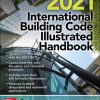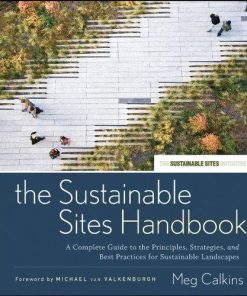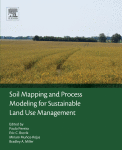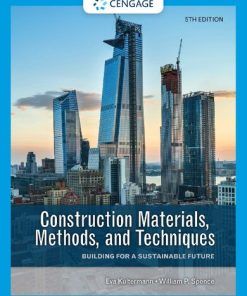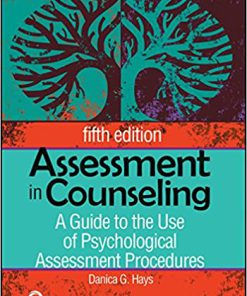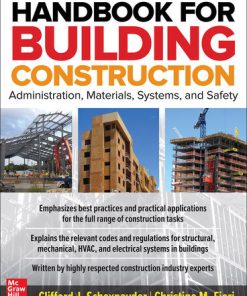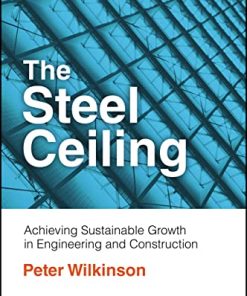(EBOOK PDF)A Handbook for the Sustainable Use of Timber in Construction 1st Edition by Jim Coulson 1119701090 9781119701095 full chapters
$50.00 Original price was: $50.00.$25.00Current price is: $25.00.
A Handbook for the Sustainable Use of Timber in Construction 1st Edition by Jim Coulson – Ebook PDF Instant Download/Delivery: 1119701090, 9781119701095
Full download A Handbook for the Sustainable Use of Timber in Construction 1st Edition after payment
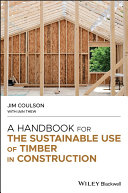
Product details:
• ISBN 10:1119701090
• ISBN 13:9781119701095
• Author:Jim Coulson
here is a growing interest in the use of wood in new building, not least because it has low embodied energy and it is an infinitely renewable resource. Despite a great deal of innovation in the use of wood in construction in recent years, the fundamentals of using this natural material have not really changed: the different types of wood have different properties and differing responses to the environment in which they are used. When used correctly, wood is an excellent building material but when inappropriately specified or used, it may cause problems. Poor understanding of the properties of wood and the many species and grades that are commercially available can result in this versatile material performing below expectation, and certainly less well than could have been achieved with greater understanding about how best to use it.
How Wood Works is a combination of the author’s two previous books, into one comprehensive volume. Revised and updated material to deal with the essentials of structural design and building in timber, in a sustainable manner while reflecting on changes in Standards and other Regulations and expanding on certain technical areas – such as more detailed wood science and wood structure.
A Handbook for the Sustainable Use of Timber in Construction 1st Table of contents:
Part 1 How Timber Works: Wood as a Material
Its Main Processes and Uses
Chapter 1 Wood as a Material
1.1 Tree growth and wood formation
1.2 Cellulose, carbon dioxide, and oxygen
1.3 The essential cell structure of wood
1.4 Wood grain
1.5 Dimensional changes in wood
1.6 Cambium, pith, heartwood, and sapwood
1.7 Natural durability
1.8 Permeability in timber
1.9 Pits
1.10 Chapter summary
Chapter 2 More on Wood
With Some Comments about Timber Trading
2.1 Should we call it ‘wood’ or ‘timber’ (or even ‘lumber’)?
2.2 Wood species and timber trading
2.3 Softwoods and hardwoods
2.4 Some more information on wood’s cell structure
2.5 The significance of ‘trade names’ versus ‘scientific names’
2.6 Growth rings
2.7 Earlywood and latewood
2.8 Rate of growth in softwoods
2.9 Rate of growth in hardwoods
2.10 Chapter summary
Chapter 3 Two Fundamental Factors in Using Wood: Fire and Water
3.1 Wood and fire
3.1.1 Fire resistance
3.1.2 Charring rate
3.1.3 Reaction to fire
3.2 Wood and moisture
3.2.1 Definition of wood moisture content
3.2.2 Moisture meters
3.2.3 ‘Wet’ or ‘dry’?
3.2.4 Equilibrium moisture content
3.2.5 Desired moisture content
3.2.6 Fibre saturation point
3.2.7 Shrinkage
3.2.8 Movement
3.3 Kiln drying
3.4 Air drying
3.5 Problems with timber as it dries
3.5.1 ‘Casehardening’ and ‘reverse casehardening’
3.5.2 ‘Honeycombing’
3.5.3 Collapse
3.5.4 Distortion in the timber’s cross-section
3.5.5 Distortion in the timber’s length
3.6 Timescales for drying timber
3.7 Chapter summary
Chapter 4 Specifying Timber: For Indoor or Outdoor Uses
With Some Information on the Biological Attack of Wood
4.1 British and European standards
4.2 Durability and treatability of different wood species
4.3 Use classes
4.4 Examples of the use of timbers in different use class situations
4.5 Hazard and risk – and their relative importance
4.6 Use class 1: examples
4.7 Insects that can attack wood
4.7.1 ‘Woodworm’
4.7.2 House longhorn beetle
4.7.3 Forest longhorn beetle
4.7.4 Death-watch beetle
4.7.5 Powder-post beetle
4.8 Treatment against insect attack
4.9 Use class 2: examples
4.10 Use class 3: examples
4.11 Use class 4: examples
4.12 Wet rot and ‘dry rot’
4.13 Modified wood
4.13.1 Chemically modified wood
4.13.2 Thermally modified wood
4.14 Use class 5: examples – plus two marine organisms which can eat wood
4.15 Chapter summary
Chapter 5 Wood Preservatives and Wood Finishes
5.1 Rule number one: treat the timber last!
5.2 Wood preservative types
5.3 ‘Old’ and ‘new’ treatments
5.4 Basic methods of timber treatment
5.4.1 Low-pressure treatment
5.4.2 High-pressure treatment
People also search for A Handbook for the Sustainable Use of Timber in Construction 1st:
a handbook for the sustainable
a handbook for the sustainable use of timber in construction
a handbook
a handbook for supporting today’s graduate students
sustainability handbook
Tags:
the Sustainable,Use of Timber,Jim Coulson
You may also like…
Relationships & Lifestyle - Families & Parents
Being a Great Dad For Dummies®, 2nd Australian Edition Justin Coulson
Housekeeping & Leisure - Interior Design & Decoration
Engineering
Handbook for Building Construction: Administration, Materials, Design, and Safety 1st Edition
Engineering - Civil & Structural Engineering
The Steel Ceiling: Achieving Sustainable Growth in Engineering and Construction


